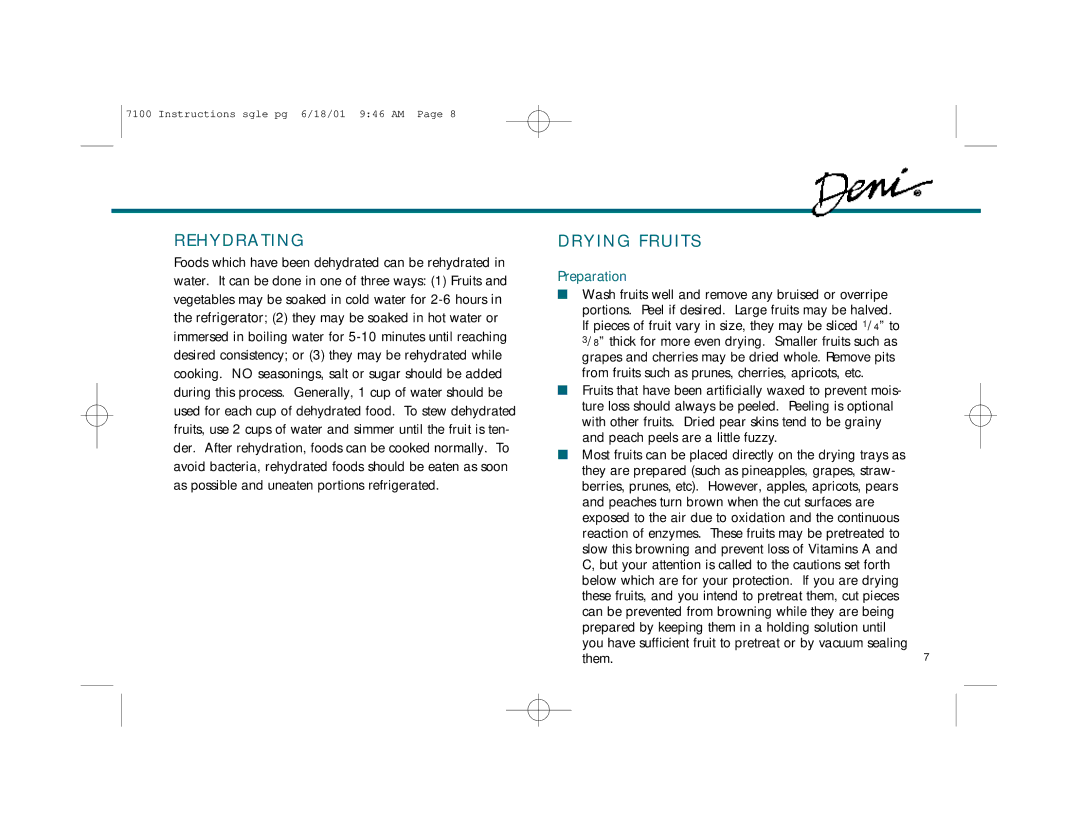7100 specifications
The Deni 7100 is a versatile and innovative kitchen appliance designed to streamline cooking processes and enhance culinary creativity. Hailing from a reputable brand known for its commitment to quality and user-friendly technology, the Deni 7100 serves as a multi-functional machine that combines several essential kitchen tasks into one device.One of the primary features of the Deni 7100 is its advanced food processing capabilities. Equipped with a powerful motor, the machine can effortlessly chop, slice, dice, and shred various ingredients, making meal prep a breeze. The stainless-steel blades are designed for durability and precision, ensuring uniform results every time. With multiple speed settings, users can achieve the desired texture for a wide range of foods, from fine purees to coarse salsas.
The Deni 7100 also features a built-in blending function, allowing users to create smoothies, soups, and sauces with ease. The blending jar is spacious, accommodating large quantities of ingredients, which is ideal for families or meal prepping for the week. Additionally, the appliance includes a heating element, enabling cooked dishes to be prepared directly in the blending jar. This unique characteristic makes it an excellent tool for making hot soups and sauces without the need for additional pots and pans.
Another highlight of the Deni 7100 is its intuitive control panel. With a user-friendly interface, it allows for easy navigation through various settings and functions. The LED display provides clear visibility of the selected options, while preset programs simplify the cooking process for common tasks.
Safety features are paramount in the design of the Deni 7100. The appliance is equipped with a locking lid mechanism that prevents accidental spills during operation. Additionally, non-slip feet ensure that the machine remains stable on the countertop even during vigorous blending or processing.
Energy efficiency is also a key characteristic of the Deni 7100. With a powerful yet efficient motor, the device consumes less energy compared to traditional kitchen appliances without compromising performance. This makes it an environmentally friendly choice for today’s eco-conscious consumers.
In conclusion, the Deni 7100 combines numerous cooking functions into one stylish and compact device. Its powerful food processing capabilities, blending features, intuitive controls, and safety mechanisms make it an essential addition to any modern kitchen. Whether you’re an adventurous home cook or simply looking to simplify meal prep, the Deni 7100 is designed to meet a wide array of culinary needs.

